
ISE 2013

Euro AV Nirvana
Integrated Systems Europe just turned 10. Which is to say, in 10 short years it’s grown from a compact gathering in Geneva to a gargantuan annual pro AV jamboree in Amsterdam (where it will officially stay for the foreseeable future).
Such has been the ballistic growth of the show that it’s kinda snuck up on the likes of us in Australia. But having experienced ISE first hand this year it’s fair to say the secret is out. It wasn’t unusual to run into an Australian, and my guess is this trend will only continue, perhaps with many electing to alternate between the US InfoComm show in June and ISE in January.
ISE has an exciting pace about it. Although it can’t quite match the floor space of InfoComm in the US, there are around 10,000 more show-goers so the ‘crush’ is noticeable. The raw stats are eye-opening: nearly 900 exhibitors, 32,000sqm of floor space over 12 halls, about 44,000 visitors over three days, and 1000 new product releases.
It was also the first show for the new InfoComm International CEO, David Labuskes. He appears to have all the right credentials to shepherd InfoComm through the next phase of its existence, a period where it must remain relevant in a market where ‘convergence’ is in danger of absorbing pro AV into the IT Borg.
Labuskes spent more than 13 years as vice president of RTKL, a leading architectural and engineering firm. He founded the company’s Technology Design Practice, overseeing the delivery of AV, voice, data, wireless, environmental media, electronic security and acoustic services. He’s also an industry association veteran, serving on a number of committees and boards. In his press conference, Labuskes reaffirmed InfoComm’s commitment to delivering standards and providing quality industry education programs. When AV asked how the pro AV sector could better attract the respect and attention of architectural firms and consultants such as RTKL, he pointed out the obvious – that it’s a numbers game. As professional AV becomes a bigger line item, so it will attract a commensurately bigger slice of respect and attention. Nonetheless, one gets the feeling that Labuskes’s deep insight into the AV world from a participant’s perspective will be very valuable, and help pro AV shake off its ‘bang and hang’ throwback reputation.
BARCO & PD JOIN FORCES
There were two key industry shakedowns that were newsworthy. Just prior to Christmas we heard about the formation of The ProAV Group. The 800lb technology gorilla, Nortek, made the move, combining the product and marketing resources of Gefen, Magenta and TV One within the Nortek Technology Solutions segment. Nortek has identified some unique strengths in each company – the high-end video technology of TVOne, large-scale system integration capabilities at Magenta Research, and Gefen’s innovative digital connectivity smarts – but clearly we will see some R&D and marketing rationalisation as Magenta and Gefen, especially, dance the two-step without treading on each other’s toes. There was no doubting who was the senior partner of the group when AV spoke with Gefen CEO Florian L. Goebel at ISE! But one wonders if his perspective is shared by the Magenta folk over the pond in Connecticut.
Fresher off the press is Barco’s acquisition of 61 per cent of Norwegian projection specialists, projectiondesign. The words ‘joining forces’ were writ large at the official press conference and Barco – by far the more senior partner in the partnership – was magnanimous in its pronouncements. And there are clear synergies at work here. projectiondesign will be given enough rope to continue its innovative work and may actually afford Barco the benefit of its marketing skills – PD has always punched above its weight both here and internationally thanks to its adroit treatment of the media… like AV, which spoke to Barco’s entertainment division VP, Buyens Wim, and projectiondesign president, Jorn Erickse.
Buyens Wim: We want to preserve both identities, the strengths of both companies – that’s key for ‘joining forces’. It’s not about one taking over the other – financially that’s another conversation. From Barco perspective, we bought 61 per cent because we like what we’ve seen, and we want to keep those values and competencies.
Jorn Ericksen: We share competencies – commercial, technical, logistical, etc – and we will explore the best practical exchange from that back office perspective. From a front office perspective, our combined product range will encompass more than before.
BW: We want to keep the product lines of both. We want to keep the customers of both and we want to strengthen the value of both. We’ll keep the development teams. We want single-chip development and three-chip development, so it’s not about one taking over the other. We’ll expand the single-chip portfolio, and we see a great opportunity to expand the three-chip portfolio.
AV: We’ll see three-chip PD projectors?
JE: We as a team will, yes.
AV: What about Australia, in particular?
BW: We have two setups in Australia. How those setups combine to capture a broader market with a broader portfolio – that’s the question and the goal. We want to keep both teams there, but there will be one office. To be honest, in Australia it’s a relatively easy blend, given both are based in Sydney and the existing synergies. For example, PD is strong in simulation and virtual reality while Barco is big in cinema and control room-related products. They’re very complementary in that regard. It’s not a case of one or the other, but complementary.
SIGNAGE TIPPING POINT TIPOFF
Digital signage pundits have been talking about the market’s ‘tipping point’ for years – that moment when digital signage goes mainstream. There have been plenty of false dawns but more evidence appears to be gathering. One thing’s for sure, we have the undivided attention of the big display manufacturers. Samsung, LG, NEC, Sharp and Philips in particular went very heavy on digital signage at this year’s ISE. Samsung set the agenda by acknowledging what was obvious to all: its (or any of its competitors’) digital signage software wasn’t very good. Rather, strategic relationships needed to be forged with the specialists. Samsung did this by announcing partnerships with Scala and SignageLive – a provider of cloud-based signage solutions. For its part, Samsung has a new range of displays with integrated processors and networking. Furthermore, it recognises that its market-leading penetration into the handheld/smartphone market provides those putting together signage solutions with new and innovative ways to reach consumers.

SCREEN FASHION
So will the digital signage tipping point be reached thanks to technological advancements and integration rather than consumer demand? Well, perhaps. Only currently, it’s hard to see who’s making any money out it.
As one seen-it-all NEC exec confided to AV on the show floor, there’s certainly no money to be made manufacturing screens – such are the anorexic margins. But here’s the rub, either you’re in or you’re out; you either go hard with commercial displays, or you go home. All the while, the struggle is to be first to market with the next big thing.
4k, or at least quad HD, is now no longer a sideshow oddity, as at least five manufacturers are in full production, mostly in the 60- to 84-inch range. What will we do with this abundance of pixels? Of course, in pro AV world we can have full HD picture-in-picture, etc; while in consumer land, Sony and JVC are offering affordable 4k video cameras. If 4k is simply not doing it for you, then Sharp’s 8k 85-inch LCD might be more your cup of tea.
3D: It was goggles at 20 paces at the LG stand, as it demonstrated its 3D credentials. An enormous 7 x 7 array of thin-bezel 55-inch screens was used to display some of its own content. Philips had another take on 3D, demonstrating its glasses-free (lenticular) 55-inch 3D LED display. There’s a quoted 150° {{degree}} viewing angle which makes it particularly well suited to digital signage applications.
OLED: And there’s the soon to be big, organic LED. Curiously, there was precious little to write home about on the OLED front. Perhaps we need to wait until InfoComm in June for more.
And what about size – the traditional means by which you can buy yourself a few months of greater market share? Well of course size still matters, but it just doesn’t draw the same oohs and aahs as it once did. Saying that, a manufacturer such as Sharp is pinning plenty of its hopes on ‘living large’. Its 70-inch LED display (literally) fills living rooms for only around $US3500, while its commercial grade 80-inch model can easily accommodate 1:1 life size renditions of the human form (in portrait mode, obviously) and has plenty of signage appeal. Video walls were also aplenty, and narrow bezels have really cleaned up the profiles of large multi-screen displays that have become the mainstay of just every tech-heavy exhibition floor.
LASER GUIDED
Speaking of the next big thing, laser projection continued to lift its profile at ISE. Everyone loves the idea of laser although it means different things from different manufacturers. With figures of some 20,000 hours of lamp-free performance – and with considerable power savings – large multi-room institutions such as universities and conference centres are waiting, tongues lolling, chequebooks in hand. One serious hurdle thus far has been lack of brightness, however in recent months several manufacturers have announced products at the 4000 ANSI lumen mark. The laser/LED technology has a couple of desirable spinoffs: the aforementioned 20,000 hours of maintenance-free operation, the hot start functionality (go from ‘mute’ to full brightness immediately) and its ‘tilt free’ installation – which will make it a favourite with installers.
Casio stole a march on the opposition a couple of years ago with its first range of laser-LED DLP projectors and several others have followed, including BenQ and Mitsubishi (who both released short-throw models at ISE) and now Sony. Sony’s new WUXGA projector with what it labels as Laser Source Technology (although there’s no explanation yet as to exactly what this is) caused a bit of a PR stir at ISE. When it becomes available in the middle of the year, it will be the first lamp-free projector to combine a laser light source and a 3LCD engine.
AUDIO MOUSETRAP
Nothing jumped out as being especially ground breaking in the world of installed sound. Dante’s star continues to rise with speakers in a large install moving to become yet another ‘end point’ on a network. SoundTube went one step further by using PoE (power over Ethernet) to run its 40W speakers, albeit over the ageing Cobranet audio standard.
But a final nod must go to Powersoft, which must take the prize for the Heath Robinson product of the show. The DEVA is a standalone, solar-powered… um, not entirely sure what you’d call it. It’s a wi-fi PA speaker. It’s a surveillance station with built-in mic and camera. It packs a high-powered LED light, can be easily remotely programmed, the battery will run for 64 hours, it will take an SD memory card, a GSM SIM card, and it can respond to a bunch of sensors… No, I’m not just making this stuff up. In fact, if I could add my contribution to the back-of-the-Peroni-beermat feature list I’d include a smartphone charging station and trouser press. Powersoft?
– Christopher Holder


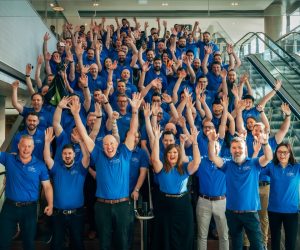

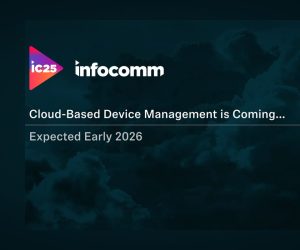
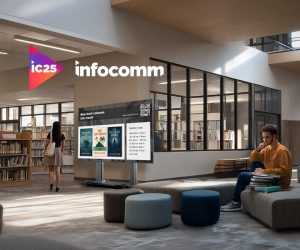
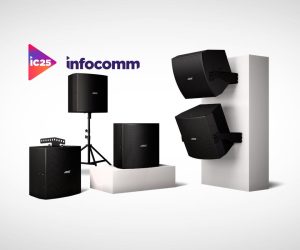
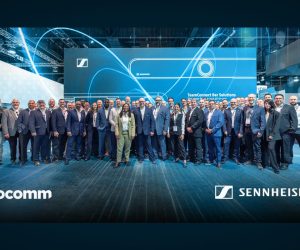
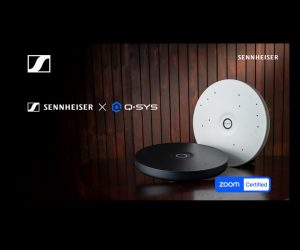

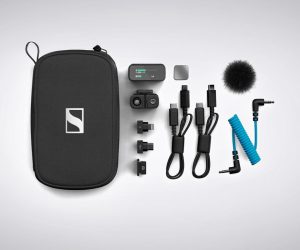
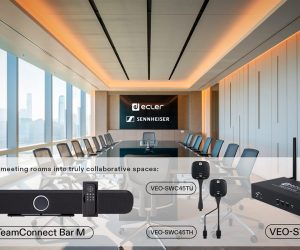
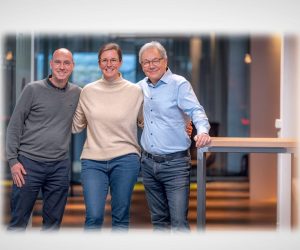


RESPONSES